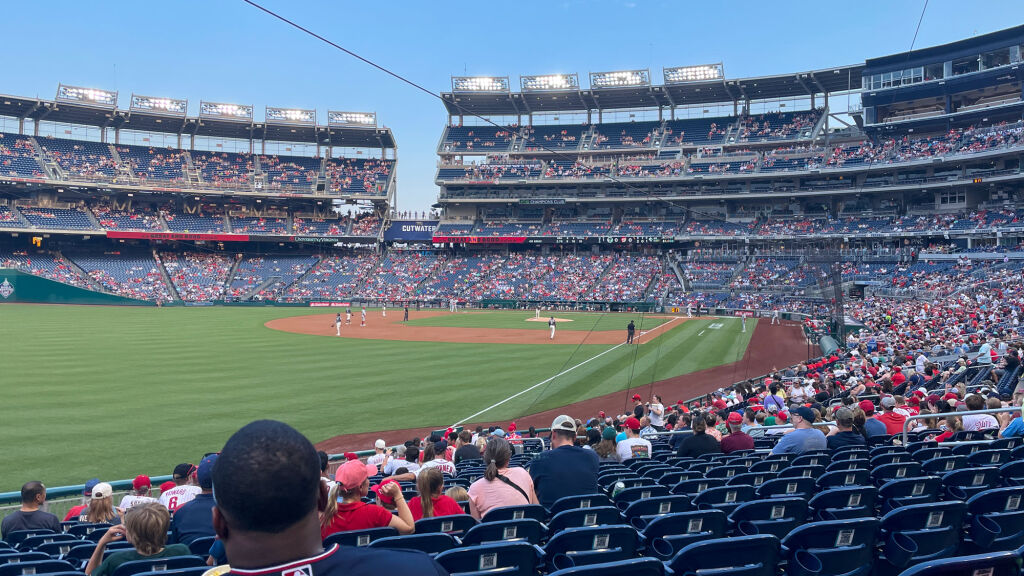Five Dance Words that Lead Double Lives
Even if you’ve never set foot on a dancefloor, you’ve probably heard someone say “it takes two to tango.” Maybe you’ve “waltzed” right up to someone and introduced yourself, no dance shoes required. Dance words like these lead vibrant double lives, appearing throughout American slang, sayings, and songs. In honor of International Dance Day (April 29), we’re telling the stories of five of our favorites.
1. Hustle
“Hustle up!”
For a word associated with hard work and effort, it stands to reason that “hustle” juggles an impressive number of definitions. As a verb (according to Merriam-Webster), it can mean to “jostle, shove,” or “convey forcibly”; to “hasten” or “hurry”; or “to make strenuous efforts to obtain” (either legally or by more underhanded means). It’s often used as a noun as well, as in “you can’t deny her hustle” or “the hustle and bustle of city life.”
“Hustle” picked up yet another meaning in the 1970s, when people started using it to describe a particular partner dance being developed in New York City nightclubs. This flashy new dance was done to disco music and was characterized by speed, syncopation, and showy spins for both the leader and the follower. Though it’s hard to determine exactly when the dance was named or who named it, it’s certainly apt: the energy and motion in this multitasking verb/noun fit this high speed dance to a T.
2. Jive
“That doesn’t jive with me.”
The word “jive” captures the spirit of swing. It refers to a style of dance developed by African Americans in the early 1930s and 40s, as well as the jazz music that accompanied these dancers. Jive is related to other swing dances like Lindy Hop and Jitterbug, and it features all kinds of high-energy flicks, kicks, and spins. It is still danced socially and competitively, both in ballroom dance competitions and on the popular TV series Dancing with the Stars.
Early non-dance uses of the word indicate “glib, deceptive, or foolish talk” or specialized jargon. Given that jive songs usually had witty, suggestive lyrics, these definitions are very much in the spirit of the dance. However, “jive” also picked up another, unrelated meaning. When “jive” entered the American lexicon, people began confusing it for “jibe” (meaning “to agree or correspond”). “Jive” is often still used in this way, as in “that doesn’t jive with my memory of things” or “your story doesn’t jive with the facts.”
3. Waltz
“You think you can just waltz right in here?”
First recorded in the 1790s, the term for this whirling, circular dance comes from the German word walzen, which means “to turn.” This dance, which now has a rather formal, respectable reputation, was actually quite a scandal when it first emerged. Take this critique, from an 1833 manners guide called The Gentleman and Lady’s Book: “The waltz is a dance of quite too loose a character, and unmarried ladies should refrain from it altogether.” Criticisms like this, largely aimed at the women who participated in this dance, stemmed from the dance’s close embrace and the vigorous spinning involved.
Since this dance’s inception in the 18th century, the word “waltz” has gained a dizzying variety of meanings. Merriam-Webster includes several uses of the word, including “to advance easily and successfully” (as in “waltzing through life”) and “to approach boldly” (as in “You can’t just waltz up and introduce yourself like that.”). These seemingly disparate meanings — indicating ease and boldness simultaneously— reflect the many faces of the dance, which can be both soft and slow and vigorous and strong.
4. Fandango
“Scaramouch, scaramouch, will you do the fandango?”
When you hear the word “fandango,” you probably think of one of two things: the popular movie ticket website, and Queen’s legendary song “Bohemian Rhapsody.” Long before Freddie Mercury and the internet, however, the “fandango” was a courtship dance performed in 18th-century Spain. A pair of dancers tease and pursue each other with energetic steps and movements, typically accompanied by guitar music and castanets.
The word “fandango” picked up some additional meanings when it entered the American English lexicon. Merriam-Webster gives “tomfoolery” as a secondary definition. Due to its close relation to such an extravagant dance, the word can also indicate a big fuss or quarrel.
5. Tango
“It takes two to tango.”
“Tango” can describe a variety of dances, from the sultry Argentine Tango, recognizable by its intricate footwork, close embrace, and foot flicks, to the standard ballroom tango, where the leader and follower use large, commanding steps to fly down the floor. The word probably gets the most use in its idiomatic sense, though: “it takes two to tango.”
This saying was popularized in the 1952 song “Takes Two to Tango,” written by Al Hoffman and Dick Manning. The tune was recorded by artists like Bing Crosby and Louis Armstrong and features witty verses like this one, from the Ray Charles recording:
“You can get very old by yourself
Catch a fish or a cold by yourself
Dig a ditch or strike it rich all by yourself
There are lots of things that you can do alone
But it takes two to tango…”
Tango also leads a covert third life as part of something called the NATO phonetic alphabet. This radiotelephonic spelling alphabet is a set of words that stand in for each letter of the English alphabet, from Alpha to Zulu. The alphabet is designed with distinct words for each letter to prevent confusion between people communicating by radio, where interference and sound distortion can make similar-sounding words indistinguishable.
Sources & Further Reading
For ties between dancing and poetry (which are innumerable), see poets like Rita Dove, or look back on our interview with Poetry in America founder Lisa New, which includes commentary on Emily Dickinson’s “I cannot dance upon my toes.”
To learn more about the NATO Phonetic Alphabet, visit their website.
For more on the waltz’s scandalous history, see this delightful National Geographic article or, if you’re feeling like a trip to the library, the Grove Dictionary of American Music.
Other valuable sources for this post include the Encyclopaedia Britannica, The American Heritage Dictionary of Idioms, the International Encyclopedia of Dance, and the Bloomsbury Encyclopedia of Popular Music of the World Volume IX (Genres: Caribbean and Latin America).



